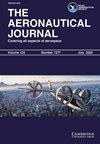节能设计系统,使飞机的燃油损失最小
IF 1.6
4区 工程技术
Q2 ENGINEERING, AEROSPACE
引用次数: 1
摘要
将一个系统或一组系统集成到现代固定翼飞机中,只有在飞机产生的燃油损失最小化的情况下,即恢复飞机初始性能所需的燃油量保持在最低水平,才能令人满意地实现。多年来,飞机系统必须满足越来越严格的要求,这不仅反映在飞机的性能不断提高,而且对飞机上的系统提出了更大的要求,一个有点极端的例子是2马赫罗克韦尔国际b - 1轰炸机,其航空电子设备的冷却要求超过几百千瓦。由于这种趋势在可预见的将来很可能继续下去,目前燃料供应的恶化情况和所涉费用的不断上升,强调有必要确保下一代飞机的系统设计为尽量减少损失和最有效地利用现有燃料。本文章由计算机程序翻译,如有差异,请以英文原文为准。
Energy Conservation Designing systems for the least fuel penalty on the aircraft
The integration of a system—or a group of systems — into a modern fixed-wing aircraft can only be satisfactorily achieved if the fuel penalty incurred by the aircraft is minimised, i.e. if the amount of fuel needed to restore the initial aircraft performance is kept to a minimum. Over the years, aircraft systems have had to meet more and more stringent requirements which reflect not only on the increasing performance of aircraft, but also on the greater demands made by systems on the aircraft, a somewhat extreme example being that of the Mach 2 + Rockwell International B-l bomber on which the cooling requirements for the avionic equipment were to exceed several hundred kilowatts. As such trends are likely to continue in the foreseeable future, the current deteriorating situation regarding fuel supplies and the ever rising costs involved, stresses the need for ensuring that systems on the next generation aircraft are designed for the least penalty and most efficient use of the available fuel.
求助全文
通过发布文献求助,成功后即可免费获取论文全文。
去求助
来源期刊

Aeronautical Journal
工程技术-工程:宇航
CiteScore
3.70
自引率
14.30%
发文量
86
审稿时长
6-12 weeks
期刊介绍:
The Aeronautical Journal contains original papers on all aspects of research, design and development, construction and operation of aircraft and space vehicles. Papers are therefore solicited on all aspects of research, design and development, construction and operation of aircraft and space vehicles. Papers are also welcomed which review, comprehensively, the results of recent research developments in any of the above topics.
 求助内容:
求助内容: 应助结果提醒方式:
应助结果提醒方式:


